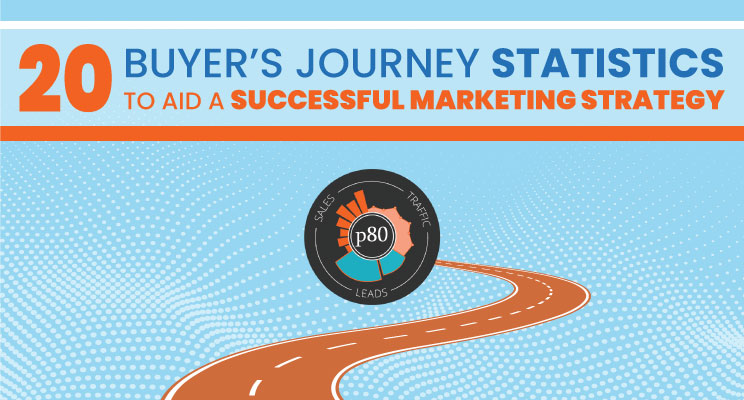
The buyer's journey is the research and decision-making process a buyer goes through to become aware of, consider and evaluate, and decide to purchase a new product or service.
The buyer's journey also includes their recognition of symptoms or problems -- pain points -- that lead to the need for a product or service.
The buyer's journey can have anywhere from three to 15 steps. However, there are three widely accepted stages of buying marketers use to describe the average B2B or B2C buyer's journey: the awareness stage, the consideration stage, and the decision stage.
Here’s an example of a buyer’s journey:
Awareness: Joe hears a strange grinding noise coming from the left side of his car while driving on the highway. He searches online “grinding noise on highway left side”. This returns several sources of information, such as blog posts, videos, and articles, about possible causes of the noise. Through these sources, Joe learns his true problem is a faulty wheel bearing.
Consideration: Joe begins researching “how to fix bad wheel bearing.” His search returns complicated instructions for fixing it himself, finding a mechanic to fix it for him, and the cost of both. Joe decides to take his car to a mechanic.
Decision: Now Joe needs to decide which mechanic he’ll use. He looks up what to expect from a wheel bearing replacement service and specific vendor reviews & ratings. He decides on a nearby mechanic who has good reviews, is trusted by his customers, and is available during hours that work for Joe.
When planning out your marketing strategies, you need to map out this process for each of your buyer personas and produce content that will be useful for those personas at each stage.
Click here to download the Ultimate Beginner's Guide to Buyer Personas for more information.
Research & Buyer’s Journey Statistics
Because of the immediate availability of information online, today’s consumers come to the purchasing table equipped with much more knowledge about how they’ll navigate their pain points. Consider these stats:
- 71% of shoppers say they use their mobile devices in stores to complete tasks such as purchasing to reading reviews. (Salesforce)
- 95% of consumers read online reviews before visiting a business. (Learning Hub)
- 54% of shoppers buy online because they can easily comparison shop (Oberlo)
- Buyers are conducting more detailed ROI analysis before making a purchase decision. (Business2Community)
- There may be 6-10 people involved in any given B2B purchasing decision. (Gartner)
- Most B2B buyers are already 57% of the way through the buying process before the first meeting with a representative. (The Marketing Blender)
- 63% of consumers who ask for information about your business or products won't make a purchase for at least 3 months. (Marketing Donut)
- 70% of buyers fully define their needs on their own before engaging with a sales representative, and 44% identify specific solutions before reaching out to a seller. (The Marketing Blender)
- 80% of business decision-makers prefer to get company information from a series of articles versus an advertisement. (Content Marketing Institute)
- When B2B buyers are considering a purchase, the majority of that time is spent researching independently online. (Gartner)
The Buyer & Relevant Content Marketing
No matter the stage the potential buyer is in, it’s critical to provide them with content they need and can use. Useless content is just as it sounds -- useless, and it can drive away customers.
- The leading reason why customers have limited engagement with B2B companies is because marketers are sending them too much irrelevant content. (KoMarketing)
- More than 75% of internet users say they read blogs regularly. (Quoracreative)
- Content marketing gets 3x more leads than paid search advertising. (Search Engine Journal)
- Using statistics in blog posts improves consumer trust. (Forbes)
- 46% of shoppers will leave a website because of a lack of message. (KoMarketing)
How the Buyer’s Journey Benefits You
Remembering the buyer’s journey and each of its stages as you develop your marketing strategy can have big impacts on your company’s bottom line:
- Marketers have noted a 760% increase in revenue from segmented campaigns. (Campaign Monitor)
- After reading recommendations on a blog, 61% of online consumers in the U.S. decided to make a purchase. (Content Marketing Institute)
- Companies that excel at lead nurturing generate 50% more sales-ready leads at 33% lower cost. (Marketo Engage)
- This year, mobile commerce is predicted to dominate online sales, driving over 50% (or $659 billion) in sales. (Retail Dive)
- Marketers who prioritize blogging efforts are 13x more likely to see positive ROI. (Hubspot)
Start With a Persona
If these eye-catching statistics above caught your interest, then you'll want to make sure you provide the most beneficial buyer's journey possible. And doing this all starts with creating a buyer persona.
To learn the best practices for creating a persona, check out our free Ultimate Buyer Persona Guide and get started with your successful marketing strategy today.
Editor's Note: This blog post was originally published in March 2016 and was updated April 2021 to reflect current insights and resources.
